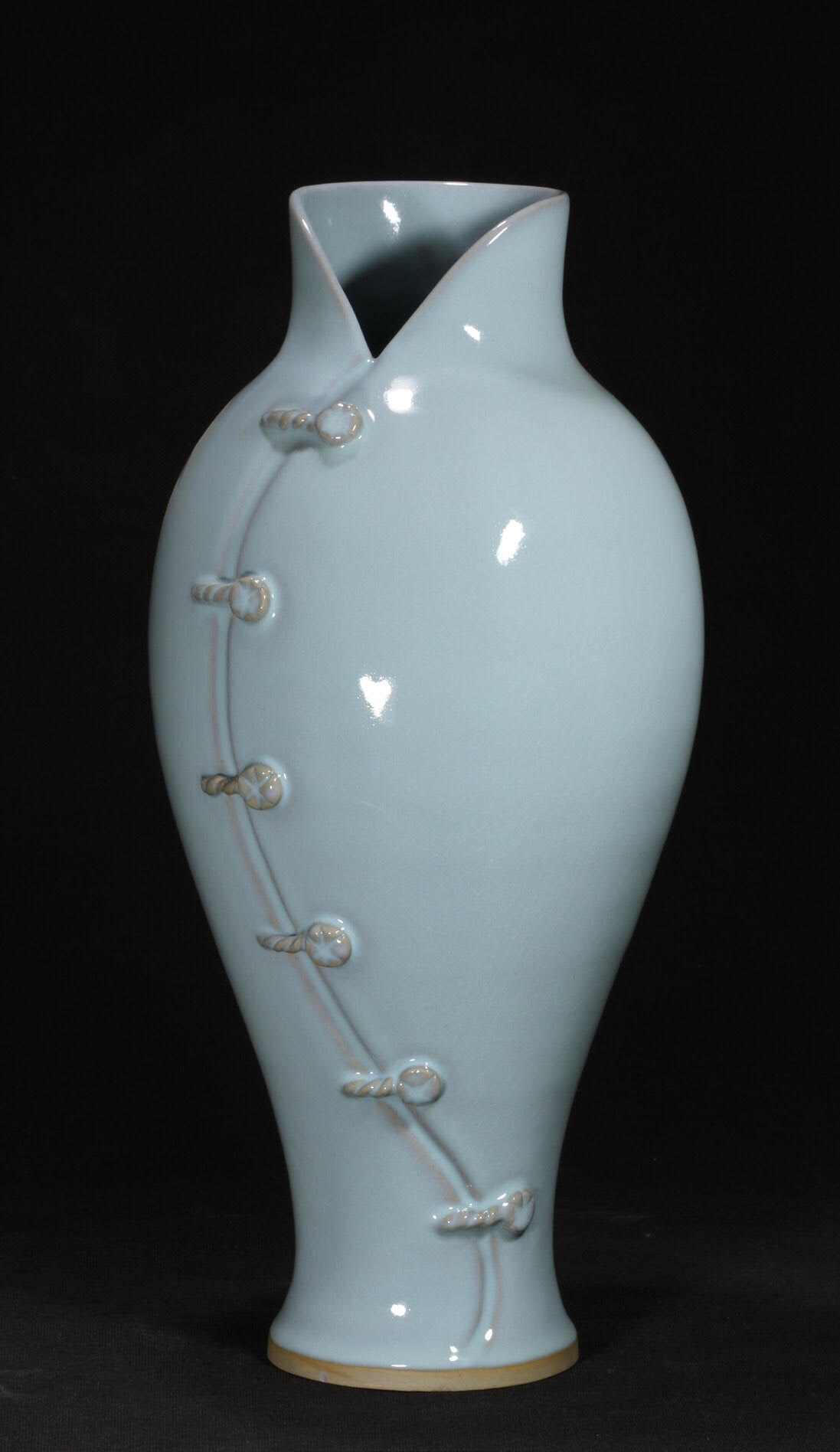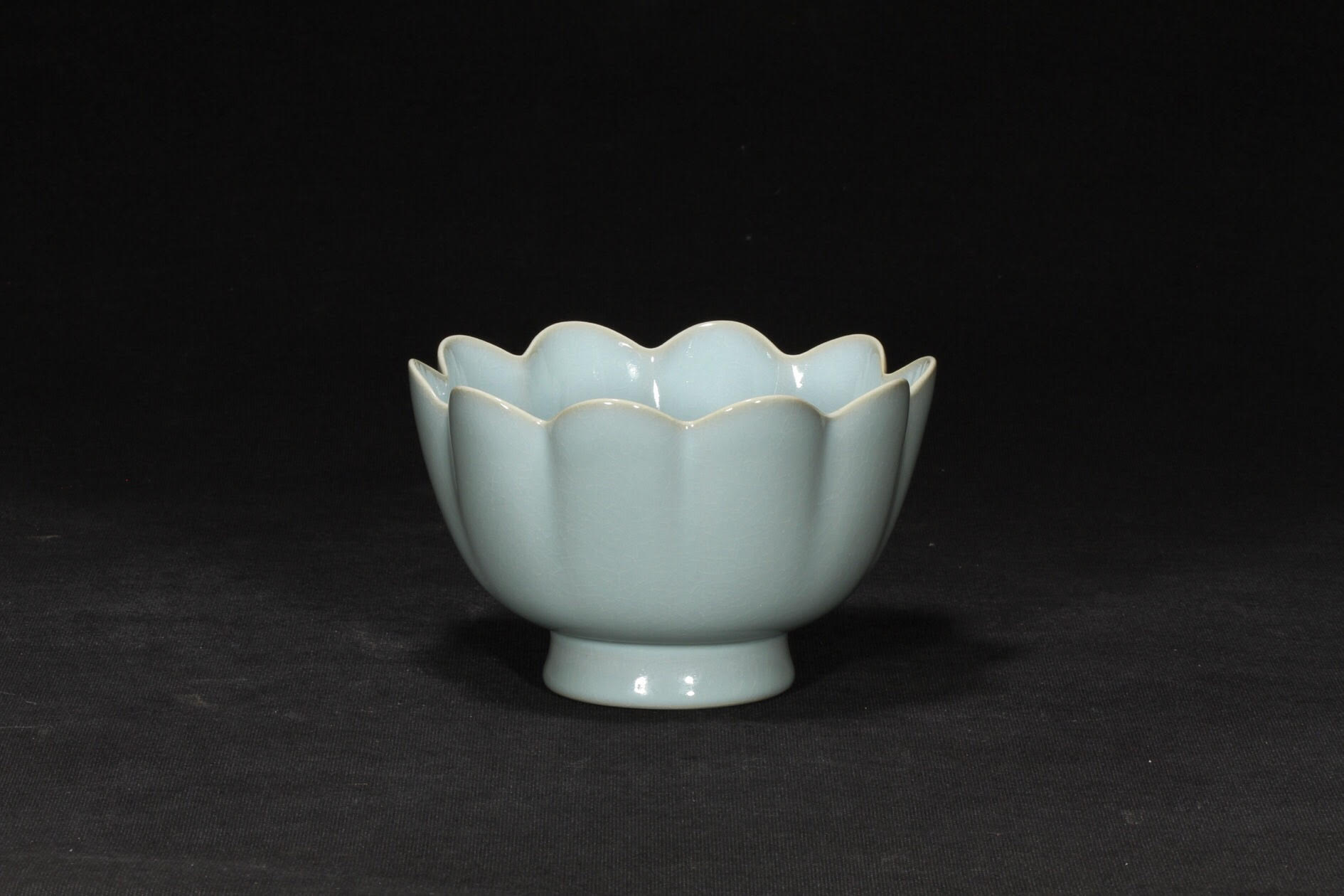Exhibition: "New Silk Road" - Contemporary Chinese Porcelain | Greece
 On the occasion of the Year of Greek-Chinese Friendship 2017, the Hellenic Ministry of Culture and Sports and the Corfu Museum of Asian Art, an ASEMUS member, have organised a temporary exhibition entitled 'New Silk Road: Ru Royal Kiln Chinese Contemporary Porcelain'. The exhibition presents 40 artworks of contemporary Chinese Ru porcelain and can be visited at the Corfu Museum of Asian Art until 9 July 2017.
Ru ware is an extremely rare type of Chinese pottery from the Song dynasty (960 - 1279), produced for the imperial court for a very short period from approximately 1085-1115. The Song ceramics are primarily stonewares which were made for court tribute, imperial use or fine every day wares. These were made at kilns in both north and south China during the Northern Song (960-1127) and the Southern Song (1128-1279) periods. In the first part of the Song dynasty, the imperial court was located in North China at Kaifeng and it was for this court that the first imperial ceramics were made.
These ceramics are known as Ru wares and they were made near modern-day Ruzhou in Henan province. Ru wares are characterized by their pale grey-blue glaze which is usually semi-opaque due to its emulsive qualities and a light grey, slightly brittle body. The forms are often based on precious materials such as ancient bronzes, lacquer and gold and silver in accordance with court taste.
It was at its height during the late Northern Song Dynasty as imperial porcelain and declined after this Dynasty was conquered by the Jin Dynasty (1115-1234). With the change of dynasties Ru kilns flourished for about 20 more years. During the Southern Song Dynasty, Ru porcelain had already become very rare. Presently, there are only ancient 60-70 Ru porcelains from the 10th cent
On the occasion of the Year of Greek-Chinese Friendship 2017, the Hellenic Ministry of Culture and Sports and the Corfu Museum of Asian Art, an ASEMUS member, have organised a temporary exhibition entitled 'New Silk Road: Ru Royal Kiln Chinese Contemporary Porcelain'. The exhibition presents 40 artworks of contemporary Chinese Ru porcelain and can be visited at the Corfu Museum of Asian Art until 9 July 2017.
Ru ware is an extremely rare type of Chinese pottery from the Song dynasty (960 - 1279), produced for the imperial court for a very short period from approximately 1085-1115. The Song ceramics are primarily stonewares which were made for court tribute, imperial use or fine every day wares. These were made at kilns in both north and south China during the Northern Song (960-1127) and the Southern Song (1128-1279) periods. In the first part of the Song dynasty, the imperial court was located in North China at Kaifeng and it was for this court that the first imperial ceramics were made.
These ceramics are known as Ru wares and they were made near modern-day Ruzhou in Henan province. Ru wares are characterized by their pale grey-blue glaze which is usually semi-opaque due to its emulsive qualities and a light grey, slightly brittle body. The forms are often based on precious materials such as ancient bronzes, lacquer and gold and silver in accordance with court taste.
It was at its height during the late Northern Song Dynasty as imperial porcelain and declined after this Dynasty was conquered by the Jin Dynasty (1115-1234). With the change of dynasties Ru kilns flourished for about 20 more years. During the Southern Song Dynasty, Ru porcelain had already become very rare. Presently, there are only ancient 60-70 Ru porcelains from the 10th cent ury AD in the world. They are reserved in National Palace Museum in Tapei, Palace Museum in Beijing, Shanghai Museum and Percival David Collection at the British Museum. The other are in American and Japanese museums and private collectors.
Today, the Ruzhou Municipal Government has attached great importance to the development of Ru porcelain and enhanced the cultivation of professional talents by establishing a sound industrial development mechanism. Up to now, there are nearly 200 Ru porcelain development companies and research institutes founded in Ruzhou, which can produce more than 2 million Ru porcelains.
The exhibition "New Silk Road: Ru Royal Kiln Chinese Contemporary Porcelain" has been produced in collaboration with the Master Alliance of Art Ceramic in China, the New Silk Road/Greece-China Culture and Friendship Association and the Management Committee of Ruzhou Porcelain e-commerce Industrial Park.
For additional information, please visit http://www.matk.gr/en/exhibitions/current-exhibitions/new-silk-road-ru-royal-kiln-chinese-contemporary-porcelain-exhibition/
ury AD in the world. They are reserved in National Palace Museum in Tapei, Palace Museum in Beijing, Shanghai Museum and Percival David Collection at the British Museum. The other are in American and Japanese museums and private collectors.
Today, the Ruzhou Municipal Government has attached great importance to the development of Ru porcelain and enhanced the cultivation of professional talents by establishing a sound industrial development mechanism. Up to now, there are nearly 200 Ru porcelain development companies and research institutes founded in Ruzhou, which can produce more than 2 million Ru porcelains.
The exhibition "New Silk Road: Ru Royal Kiln Chinese Contemporary Porcelain" has been produced in collaboration with the Master Alliance of Art Ceramic in China, the New Silk Road/Greece-China Culture and Friendship Association and the Management Committee of Ruzhou Porcelain e-commerce Industrial Park.
For additional information, please visit http://www.matk.gr/en/exhibitions/current-exhibitions/new-silk-road-ru-royal-kiln-chinese-contemporary-porcelain-exhibition/
Pictured above: Bottle, Tang Dynasty style decoration, by Yang Yunchao (2016); and Bowl in form of a lotus, by Zhu Wenli (2016)
Similar content
18 Sep 2014 - 05 Jan 2015
30 Sep 2014 - 16 Nov 2014
from - to
19 Jun 2012 - 30 Sep 2012
02 Jul 2015 - 06 Oct 2015
09 Feb 2017 - 30 Dec 2017

